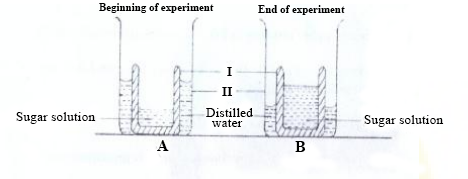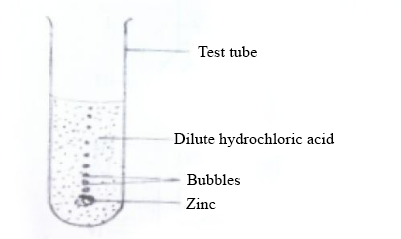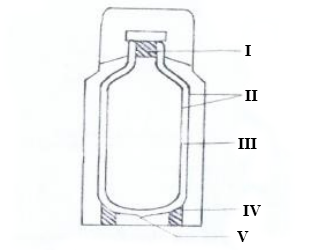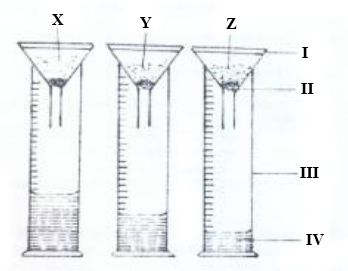ESSAY
This paper is in two parts: I and II. Answer Question 1 in part I and any other four question in part II
PART I
[40 marks]
Answer all of Question 1
-
The diagrams below are illustrations of an experiment to demonstrate a biological principle.
Study the diagram carefully and answer the questions that follow.

-
Name the parts labelled I and II.
-
State two differences between the set-ups A and B.
-
What is the role played by the part labelled I in the experiment?
-
Name the biological principle being demonstrated in this experiment.
-
State one way in which plants benefit from the principle named in (iv).
-
State one way in which animals benefit from the principle named in (iv).
-
-
In an experiment to investigate the reactivity of zinc, a piece of the metal was dropped into a test tube containing dilute hydrochloric acid. The experiment set-up is illustrated below.
Study the set-up carefully and answer the questions that follow.

-
Write a balanced chemical equation for the reaction that occurred in the experiment.
-
Name the gas evolved.
-
List two metals which can react in a similar way as the zinc.
-
List two metals which cannot react in a similar way as the zinc.
-
Name two glass apparatus which could have been used instead of the test tube.
-
-
The diagram below is an illustration of a thermos flask.
Study the diagram carefully and answer the questions that follow.

-
Name the parts labelled I, II, III, IV and V.
-
How does the device minimize heat loss or gain through
(α) conduction?
(β) convection?
(γ) radiation?
-
State one use of the thermos flask.
-
-
The diagrams below illustrate an experimental set-up on a physical property of soil using three soil types X, Y and Z.
Study the set-up carefully and answer the questions that follow:

-
Name the parts of the set-up labelled I, II, III and IV.
-
Which of the three soil types has the
(α) highest water holding capacity?
(β) least water holding capacity?
-
Name each of the three soil types X, Y and Z.
-
Suggest a suitable title for the experiment.
-